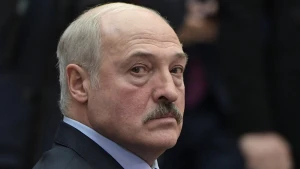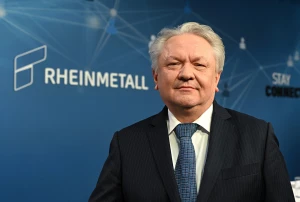
Ukraine’s Armed Forces' major counteroffensive: preparation and expectations
On June 4, the Ukrainian Armed Forces launched a counteroffensive on the southern front, continuing a series of assaults near Bakhmut and in the Belgorod region
Bohdan Bachynskyi
Ukrainians began thinking, talking and dreaming about a "counteroffensive", and thus the deoccupation of the southern and eastern regions, the day after the liberation of Kherson - 11 November 2022. Preparations for the counteroffensive included re-equipping the Armed Forces with the latest NATO offensive weapons and armored vehicles. First and foremost, we needed NATO tanks, then long-range missiles, and finally the world's best fighter jets. Without this help, our counter-offensive would have had little chance, because Russia has many times more Soviet-style military equipment, which until recently was the basis of the Ukrainian Armed Forces. Instead, NATO's much better weapons must beat quantity with quality. At the end of the year, Commander-in-Chief Valerii Zaluzhnyi, addressing the allies, said that Ukraine needed 300 tanks, 600-700 infantry fighting vehicles and 500 howitzers.
Tank coalition for the offensive
On 20 January, the US held its 8th meeting in the Ramstein format, the main topic of which was the provision of tanks to Ukraine: German Leopard 1 and 2 and American Abrams, as well as a large number of armoured vehicles. Germany was the most hesitant to provide Ukraine with its Leopard tanks, and it set a condition that it would do so only if the US promised to provide its Abrams. As a result, the Ukrainian Armed Forces will receive both types of NATO's most powerful tanks.
During subsequent meetings, the allies agreed to create a tank coalition. It included: The United States, Germany, Poland, the Czech Republic, France, the Netherlands, Spain, Portugal, Denmark, Sweden, Norway and Finland, Britain, Canada and even Morocco, which promised 30 modernised T-72s. In total, the coalition has promised to deliver at least 290 tanks. In addition to above mentioned Leopard 1 and 2 and Abrams, the British gave 28 of their Challenger 2 tanks, Poland - 30 Twardy tanks; France - 40 AMX 10-RC light tanks, and the Czech Republic and Slovakia - 90 and 30 modernised T-72s respectively. In addition, our closest neighbours - Poland, the Czech Republic, and Slovakia - have become certain logistical hubs for the supply of weapons, as well as bases for their repair. In February, the long-running saga of the transfer of tanks to Ukraine ended when our military began training on Leopard-2.
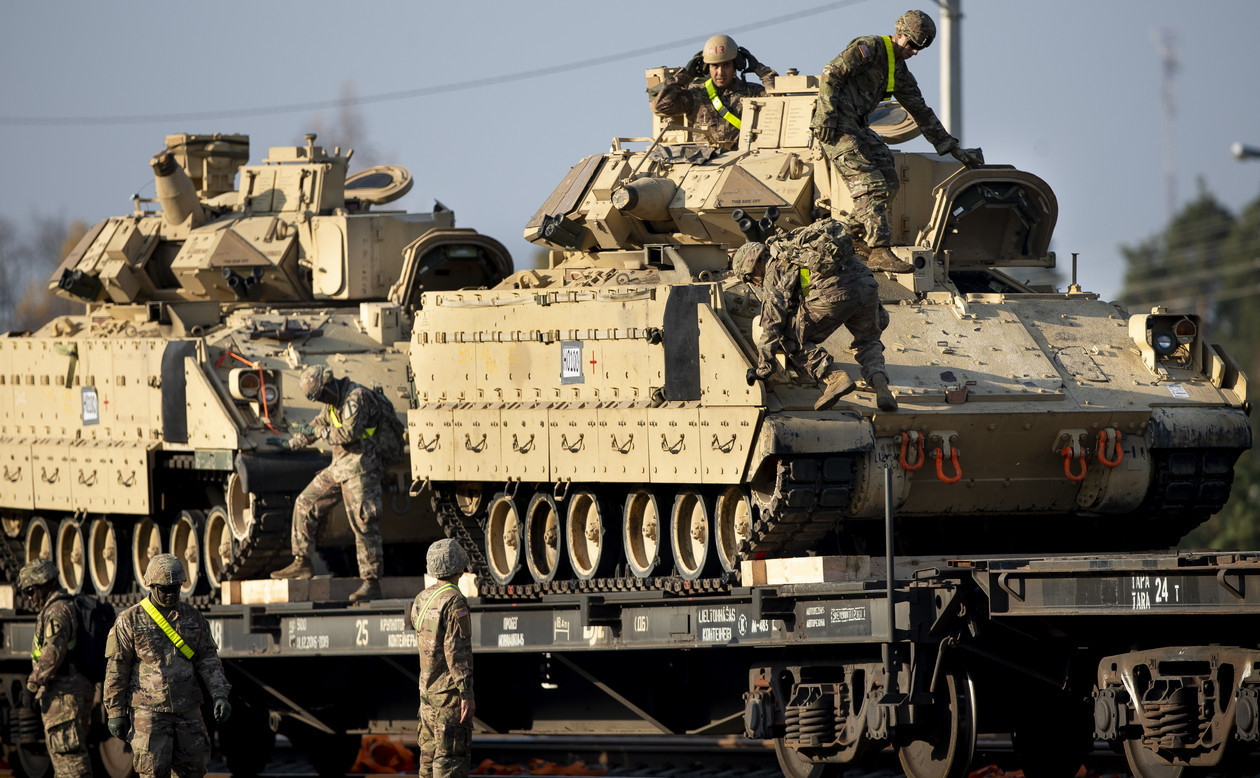
Bradley infantry fighting vehicle Photo: https://www.politico.com/
Infantry fighting vehicles and other armoured vehicles are equally important for the counteroffensive. The leaders in supplying them are the United States, which has already provided 50 Bradley infantry fighting vehicles and promised to deliver another 50 in the near future, as well as Germany, which has given us 40 Marder infantry fighting vehicles, and many American Stryker and Swedish CV 90s. In addition, Ukraine has received 1,100 armoured personnel carriers, 925 mine-protected vehicles, and 1,540 mobile infantry vehicles.
In addition, in the autumn, American Abrams and a new batch of Bradleys will finally arrive in Ukraine to take part in the next phase of the counter-offensive.
Comparison of Western and Russian armour
The German Leopard has a big advantage over the best Russian T-72s, primarily in terms of range. While the T-72 has a hit record of 2.1 kilometres, and on average hits its target from 1,600 metres, the Leopard 2 can hit the enemy at a distance of 5 kilometres. In addition, Leopards have a much more powerful projectile due to a high-quality explosive mixture. Finally, the more modern Leopard 2 has better guidance systems, better fire control systems on the move, while the T-72 has a very problematic shot stabilisation on the move.
The competition for German tanks in the hunt for Soviet tanks will undoubtedly be the Bradley infantry fighting vehicle, which is equipped with TOW anti-tank missiles. Military expert Petro Chernyk told Espreso about the Bradley's superiority over the best BMP-2 model. According to him, the gun of the American vehicle equipped with an M791 projectile can turn a BMP-2 into a sieve at a distance of 2.5 km. Instead, to damage the Bradley, a Russian armoured vehicle must approach it at least a kilometre away. The Bradley can reload on the spot, while the BMP-2 has to move away from the front line to reload. The BMP cannon has a 500-round capacity, while the M242 Bushmaster cannon (in the Bradley) has a 900-round capacity. In addition, there are many anti-tank weapons, while the BMP-2 has virtually none.
Western armoured vehicles are much heavier and have better protection for soldiers, and therefore are much better suited for counterattacks and breaking through defence lines.
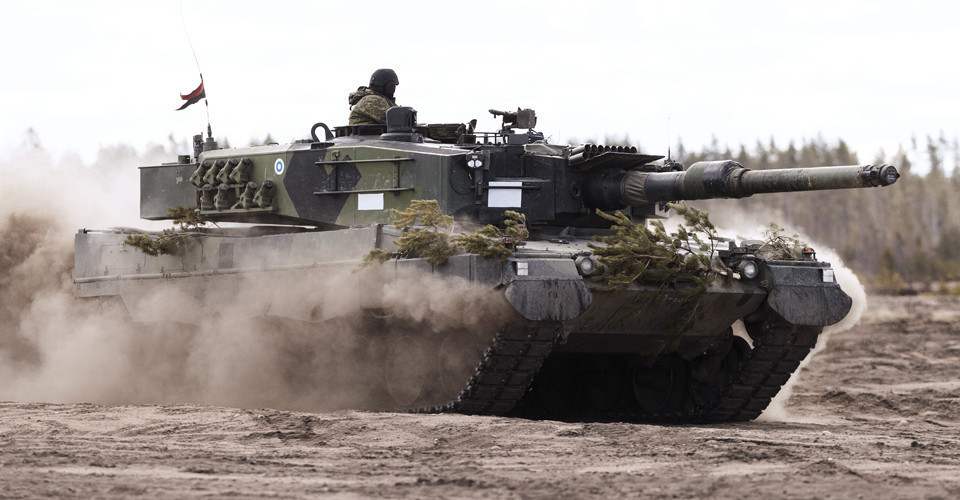
Leopard 2A6 tank Photo: gettyimages
Training of the Armed Forces of Ukraine
The counteroffensive was in dire need of additional military personnel who could master Western models of equipment, learn new tactics of warfare and replace brigades that have been defending their homeland for a long time without rest.
To support the military, the Ministry of Internal Affairs announced the creation of 9 assault brigades of the 'Offensive Guard', most of which will be part of the National Guard of Ukraine. In May, 8 brigades were fully formed, and the 9th is in the process of being manned. In total, more than 40,000 volunteers have applied to join the Guard. The much-publicised 'Offensive Guard' is mostly composed of active military personnel, often currently serving at the front.
Other brigades are being trained by the Ukrainian Armed Forces from recruits who have not yet fought. However, the number of brigades currently trained for the counter-offensive is kept secret. According to indirect evidence, experts say that the Armed Forces will increase by at least 20 new brigades. Some military officers and experts point out that the decision to staff the new brigades exclusively with "untrained" soldiers may be a mistake. However, the General Staff is convinced of the correctness of its plan.
In 2023, about 19,000 Ukrainian soldiers will be trained in the UK alone. Twenty-six countries have agreed to conduct basic training under the INTERFLEX programme for Ukrainian recruits, including the United States, Germany, Canada, Denmark, Finland, Sweden, Norway, New Zealand, Lithuania, the Netherlands, and Australia.
In 2022, more than 20,000 servicemen and servicewomen were trained abroad. "50% of those who return from training abroad go back into combat as riflemen. The rest of the personnel acquire knowledge, skills and abilities with a more professional specialisation: gunner-operator, driver, machine gunner, etc," stated the General Staff.
Joint purchase of artillery rounds
Since the beginning of the war, Russian artillery has outnumbered Ukrainian artillery several times, both in terms of the number of weapons and the number of shells. Thus, while the Russian Armed Forces could fire 50-60 rounds a day, the Ukrainian Armed Forces could fire only 5-7 thousand rounds on the better days. However, already during the battle for Bakhmut, where the largest Russian artillery group was concentrated, the number of their daily artillery shots began to drop sharply to 10-15 thousand per day. At this time, Ukrainian artillery began to suffer from a "shell famine". Therefore, in order to ensure a counteroffensive, it was necessary to resolve the issue of an uninterrupted supply of shells to ensure a daily firepower of 5,000 rounds. Therefore, in March, the EU decided to reorganise military production facilities to provide the Ukrainian Armed Forces with 1 million shells by the end of the year. First and foremost, we are talking about 155mm NATO-standard shells, including such high-precision ones as Copperhead and Excalibur. In May, the EU agreed on a scheme for joint procurement of shells and a gradual increase in their production.
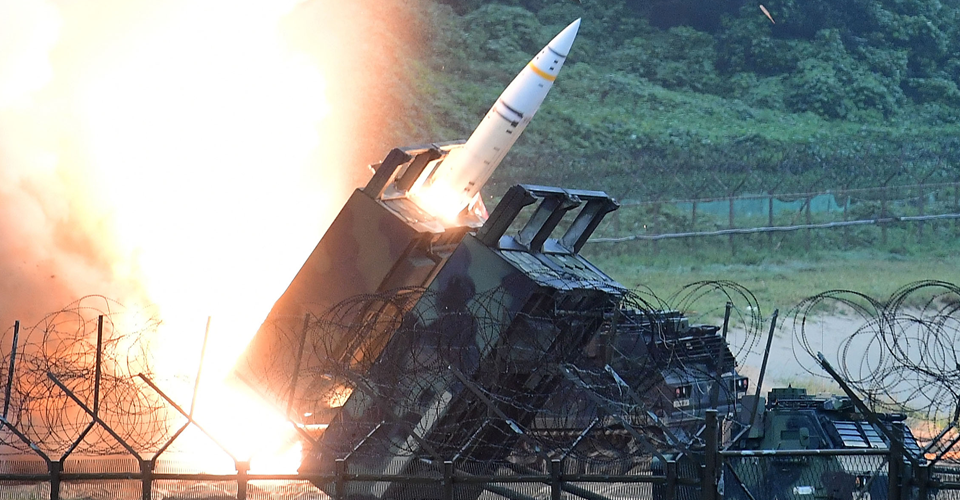
ATACMS missile Photo: gettyimages
What else is needed for a counteroffensive?
After the "tank coalition" was established and missile terrorism resumed to destroy Ukraine's energy system, Volodymyr Zelenskyy again asked the allies to provide long-range missiles that could deter the Russian forces. First of all, the President of Ukraine turned to the United States, asking for ATACMS. However, while the United States was hesitating with its decision, in May, the United Kingdom decided to provide the Ukrainian Armed Forces with one of the world's best missiles, the Storm Shadow, with a range of up to 300 km and incredible interception capability. Emmanuel Macron was the next to volunteer to provide the necessary missiles. According to military expert and head of Defence Express Serhiy Zgurets, the appearance of Storm Shadow on the battlefield completely changes the situation, being more accurate than ATACMS, they will be used to destroy sensitive and important targets. Vladyslav Selezniov, a military expert, said that the long-range missiles that the allies are providing, will allow the Ukrainian army to destroy the logistics of the Russian occupation forces. However, if British missiles have not yet hit the No. 1 target, the Crimean Bridge, in a month, it is clear that the Ukrainian Armed Forces will need ATACMS, which have more destructive properties.
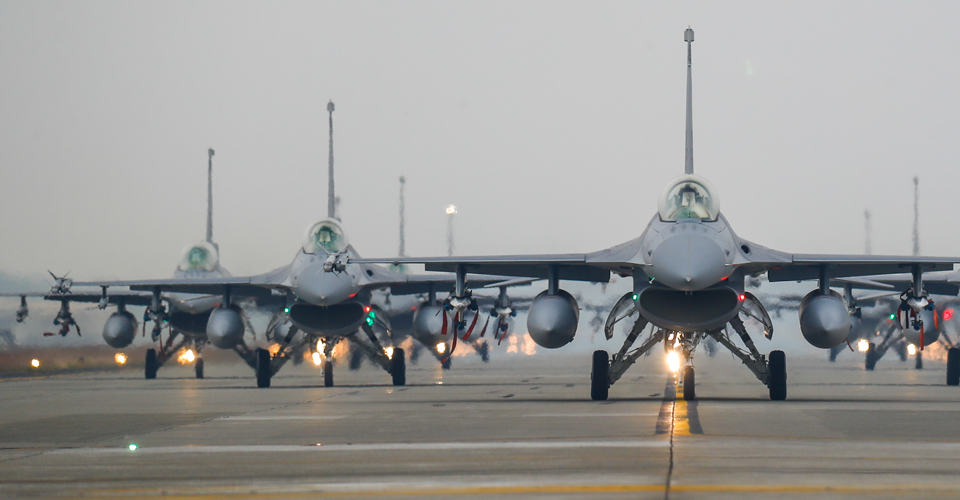
Photo: gettyimages
F-16 fighter jet coalition
In May, as part of the 12th Ramstein meeting, the allies finally agreed to provide Ukraine with 4th generation fighter jets, including F-16s. As with the tanks, a number of countries agreed to provide the Ukrainian Armed Forces with their fighter jets and pilot training. The "fighter jet" initially included the United Kingdom, the Netherlands and France, and was later joined by the United States, Denmark, Belgium and Portugal. Initially, it was said that it would take almost a year to train pilots and maintenance personnel for fighter jets, but later this timeframe was reduced to 4-6 months. Military expert Petro Chernyk believes that the F-16s will still have time to take part in the autumn counteroffensive in September. Finally, Australia was the last to join the coalition, offering to give Ukraine its F-18 Hornets.
When will the counteroffensive begin and how long will it last?
The counteroffensive was initially expected to begin in March, when tanks would arrive in Ukraine and the weather in southeastern Ukraine would allow them to be used. However, at the end of March, Volodymyr Zelenskyy said that the counteroffensive planned for spring could not begin due to a lack of weapons, and on 11 May he reiterated that the Armed Forces needed even more time to prepare. On 3 June, the President of Ukraine finally said: Ukraine is ready to launch a counteroffensive. In fact, active hostilities began the next day, which can be called the first phase of the offensive — reconnaissance by combat. Military analyst Serhiy Zgurets is convinced that the counteroffensive will be long-lasting, with decisive battles taking place in autumn.
Where is the counteroffensive taking place and what will it be like?
Obviously, the Ukrainians expect the counteroffensive to liberate all of Ukraine's territories and reach the 1991 state border this year. However, the counteroffensive cannot take place simultaneously along the entire front, and therefore deoccupation will take place in stages. Before the start of the first phase of the Ukrainian Armed Forces' offensive, there were discussions in the expert community about where the main attack of our troops would be concentrated: in Luhansk, Donetsk, Zaporizhzhia or Kherson. However, the head of the Defence Intelligence of Ukraine, Kyrylo Budanov, suggested the direction of the counteroffensive, saying that Crimea would be liberated this year before Donetsk.
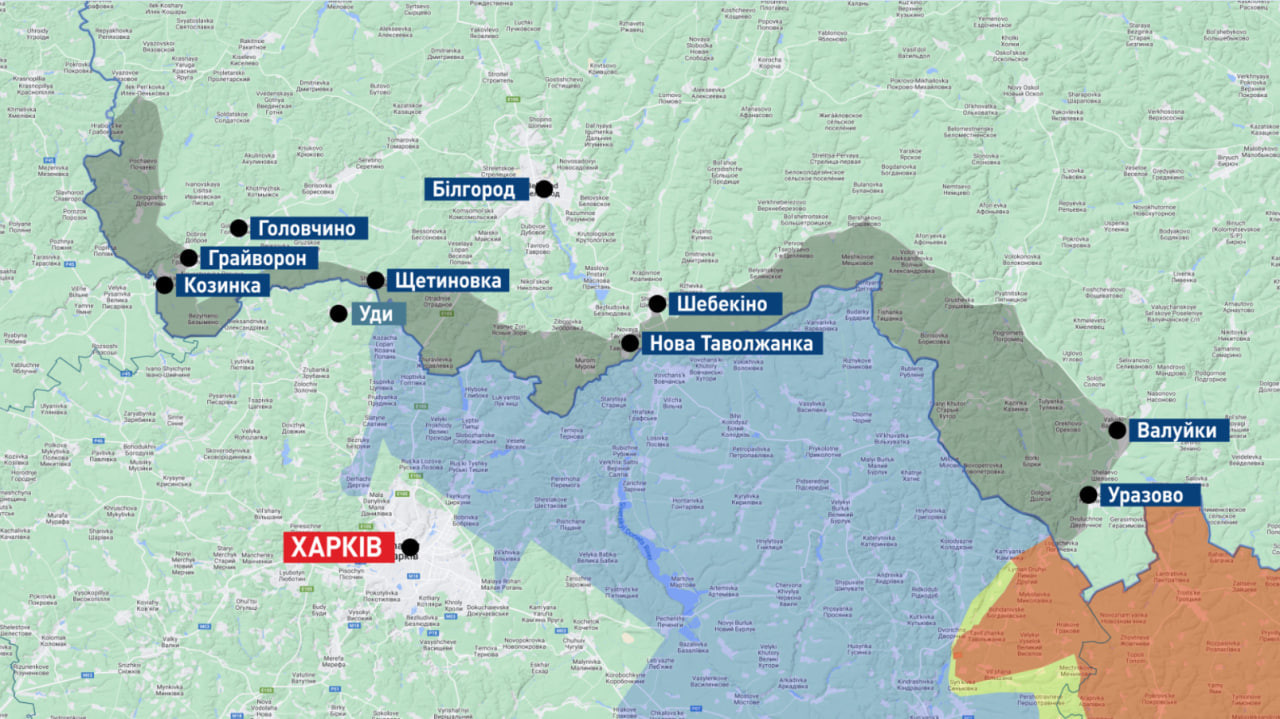
Map of Belgorod 11.06.23 Photo: Espreso
However, unexpectedly for everyone, the counteroffensive began in the Belgorod region, where the Russian Volunteer Corps began its three-week, 200-kilometre-long raid through the southwestern and southern border areas of Belgorod on 22 May. During the raid, a number of successful battles took place, they captured a lieutenant colonel and several other mid-level officers were killed. In addition, the militants managed to threaten the logistics hub in Urazovo, through which the occupiers supplied ammunition and resupply to Luhansk region. The RVC's raid managed to significantly alarm Russian society and distract some of the occupation forces.
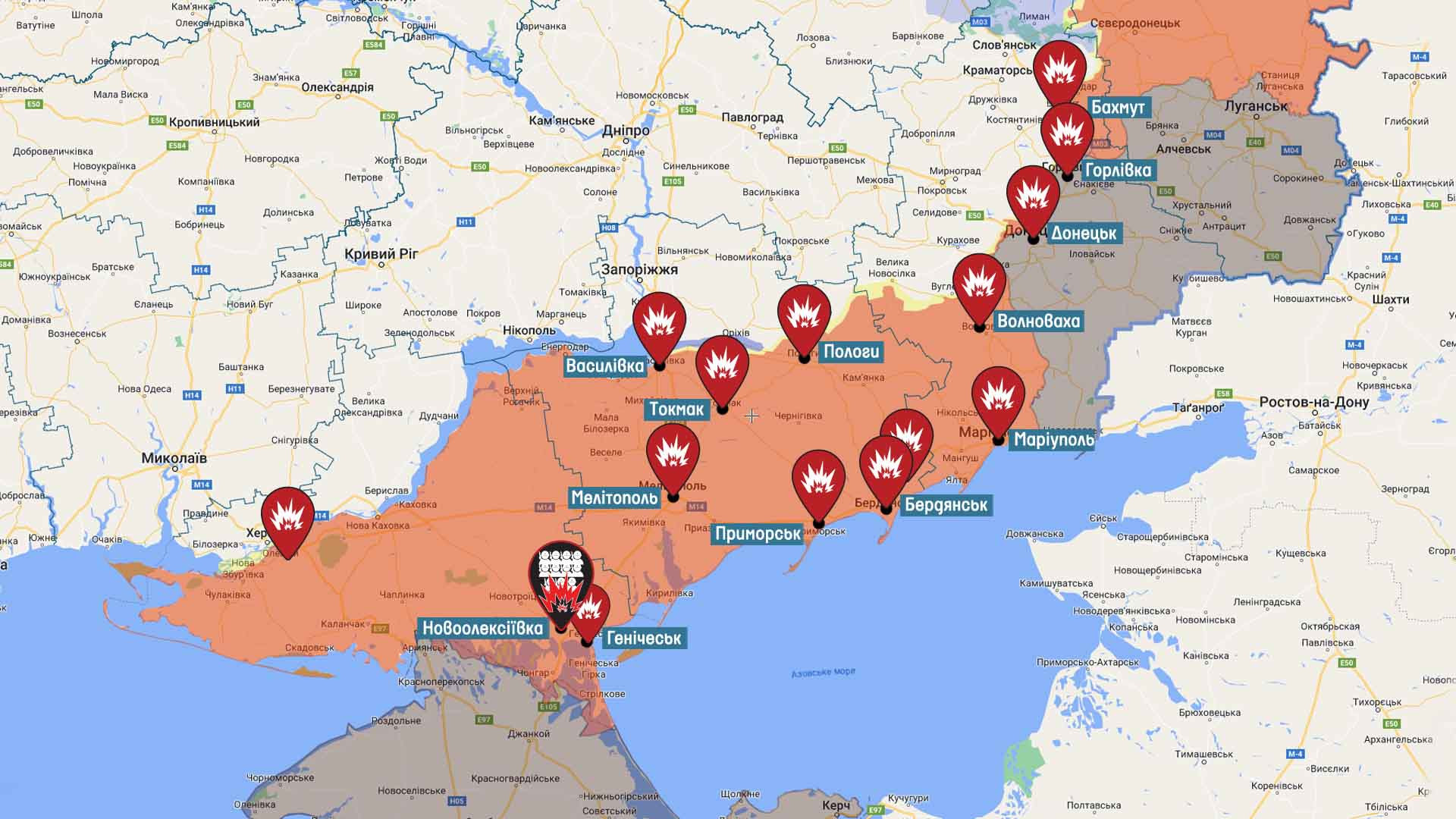
At the same time, Storm Shadow, Patriot and other advanced weapons were intensively preparing the battlefield, destroying military depots, command posts, and most importantly, enemy artillery, air defence and drones. In May, the Ukrainian Armed Forces destroyed a record number of artillery systems - 553, which is almost twice the previous record during the counteroffensive in Kherson region. In addition, the elimination of 645 drones and 38 air defence systems was an absolute record. All these actions have made our counteroffensive brigades feel more confident. In June, the level of destruction of artillery and air defence systems increased by 3 times the annual average.
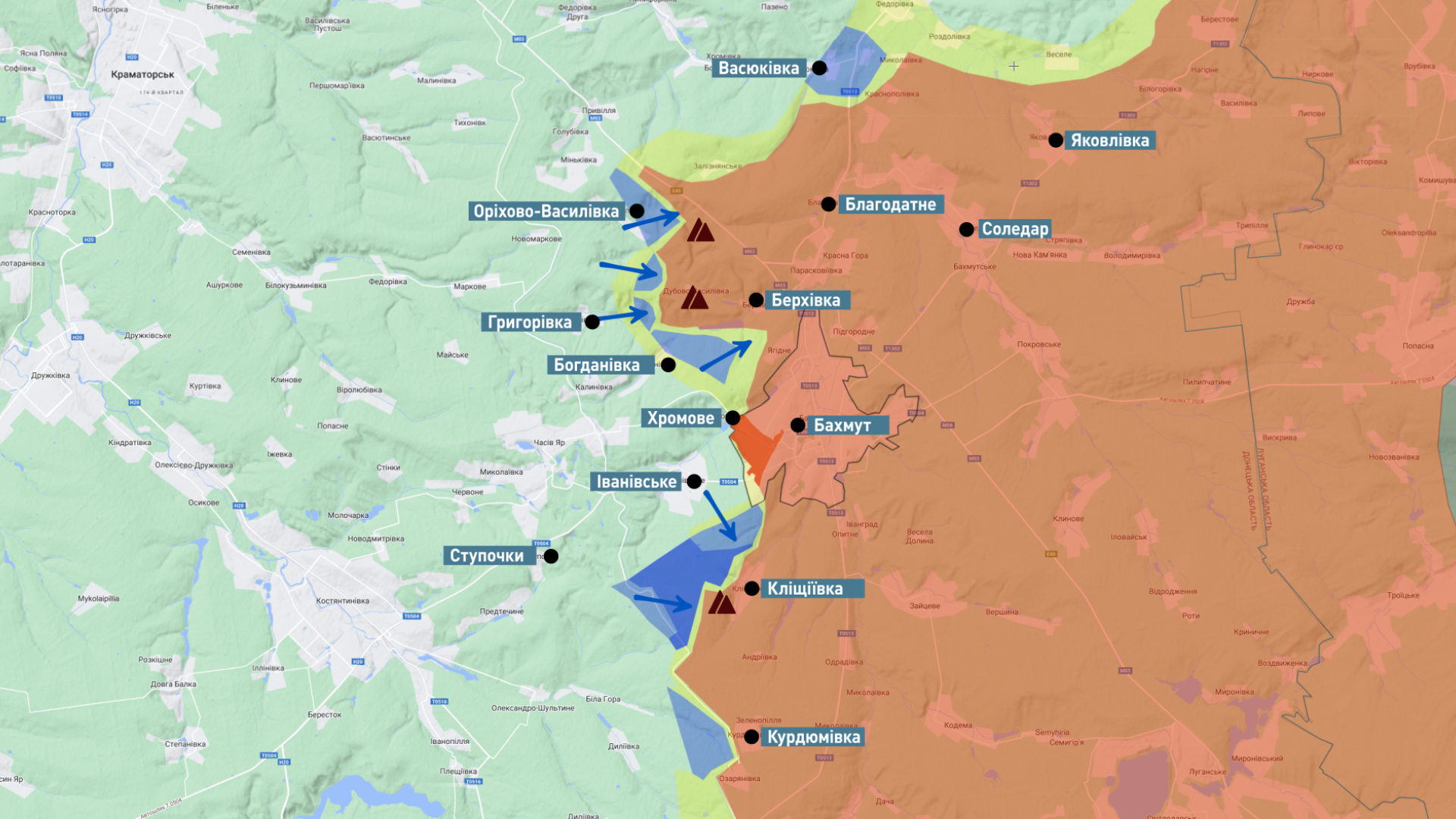
Bakhmut. Map. 2/06/23
At the same time, the situation near Bakhmut turned upside down in the third decade of May, when the Ukrainian Armed Forces stopped retreating, entrenched in the southwestern outskirts of the fortress city, and launched a counteroffensive to the north and south of the city. Within a few weeks, the counteroffensive succeeded in completely halting the advance of the Wagner soldiers and forcing them to leave the city. They were replaced by the Russian Armed Forces, which lost the initiative and continue to lose the dominant heights around the city. The main battles are for the heights in the area of Klishchiivka to the south of Bakhmut and Berkhivka to the north. According to the head of Defence Express, Serhiy Zgurets, Bakhmut has become a trap for the enemy, from which they cannot escape but also cannot advance, and therefore will be destroyed by our artillery fire.
Finally, on 4 June, the Ukrainian Armed Forces launched an offensive in many parts of Zaporizhzhia and Donetsk region, along the 200 km frontline from Vasylivka to Vuhledar. According to Serhiy Zgurets, the expected counteroffensive of Ukraine will not be similar to those in Kherson and Kharkiv regions. This time, Russian enemy has made thorough preparations and built three defensive lines along the entire southern front, as well as heavily fortified a number of key cities.
Expectations from the counteroffensive
The most optimistic forecasts of a counteroffensive were made by Ben Wallace, the UK Defence Secretary and one of the contenders for the post of NATO Secretary General. He suggested that Ukraine could regain Crimea by the end of the year. His optimism is shared by Kyrylo Budanov. Instead, the Western press is considering 3 possible scenarios: the successful one is the access to the Black Sea coast and the collapse of the Russian army, the second one involves a less successful advance of the Armed Forces, limited Russian losses and the ability of Russian occupiers to continue the war. According to the third scenario, the counteroffensive will fail.
In case of success, US Secretary of State Antony Blinken is confident that Ukraine will be able to negotiate on its own terms. On the other hand, the West is preparing to implement a longer-term scenario, including the provision of security guarantees and military support, which will sooner or later lead to victory over the aggressor.
- News








